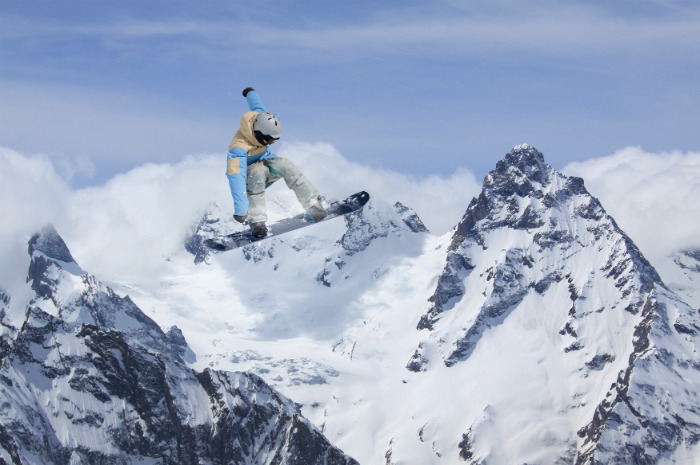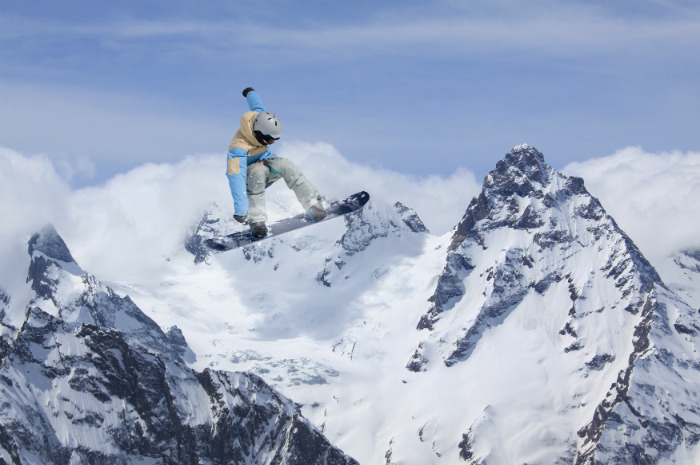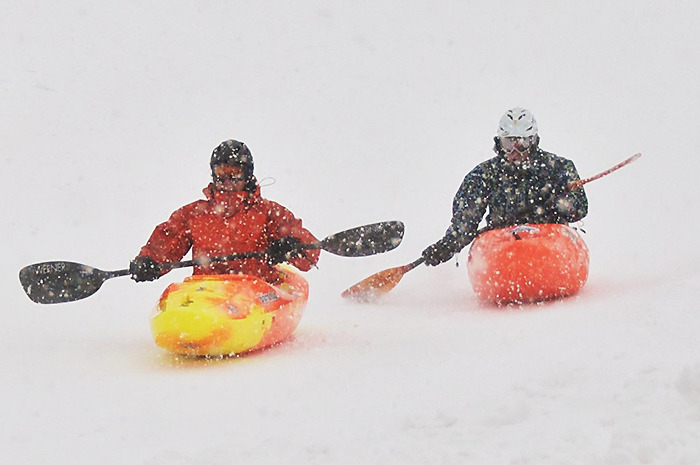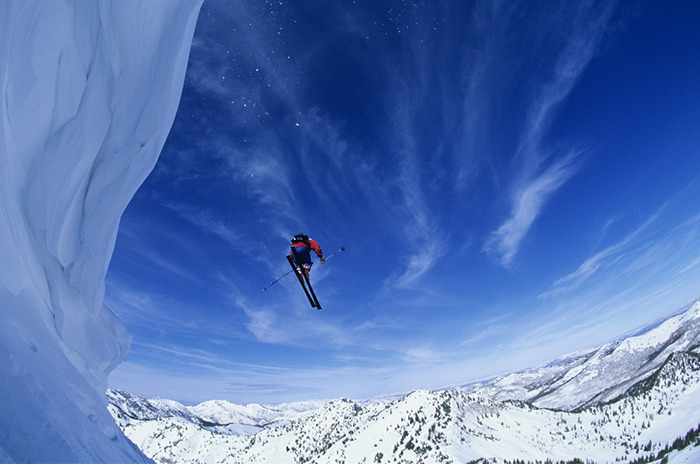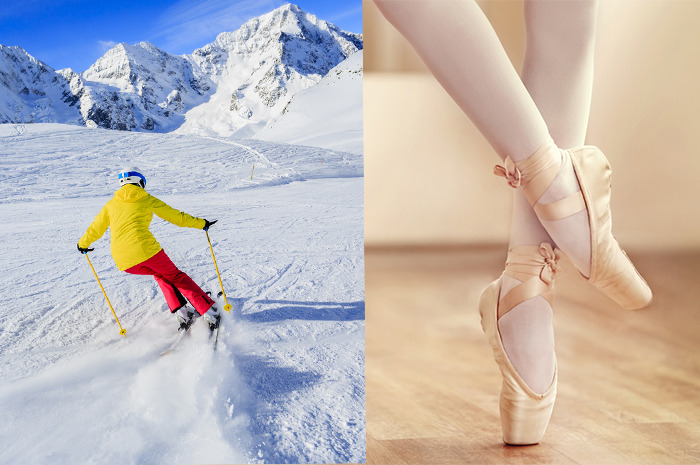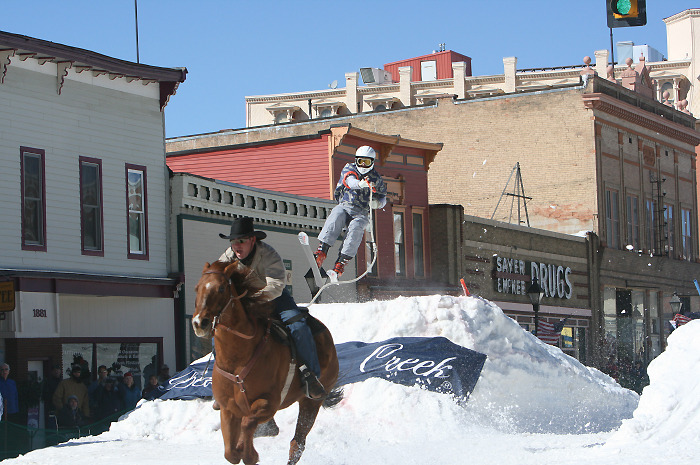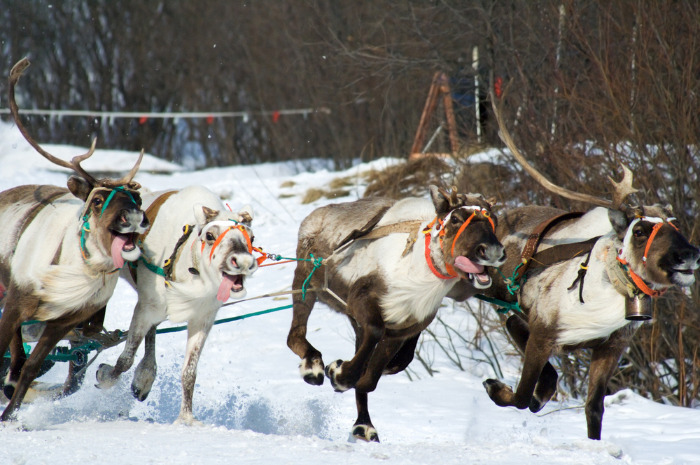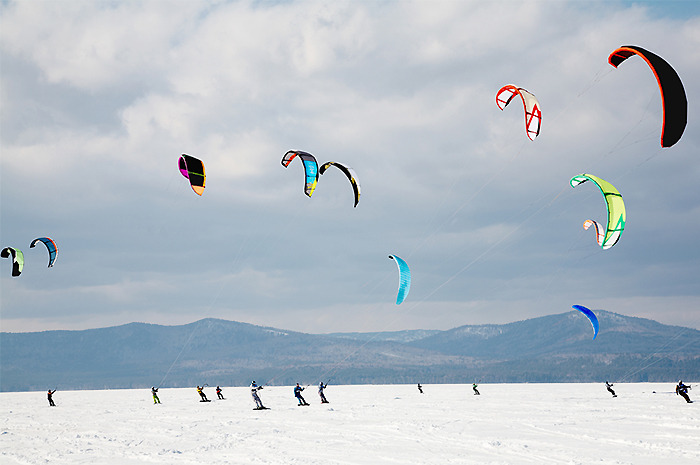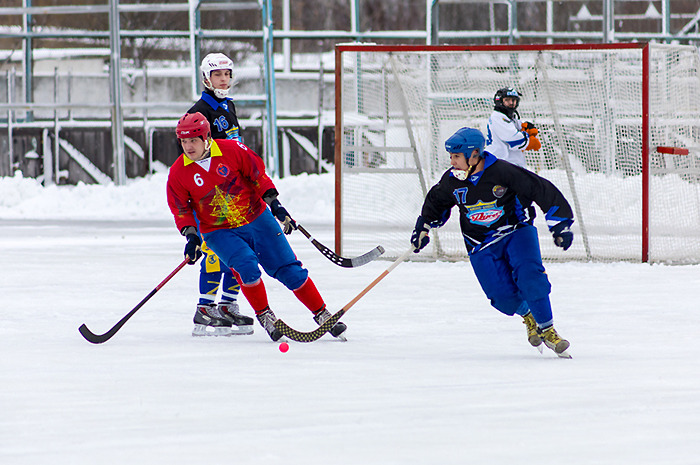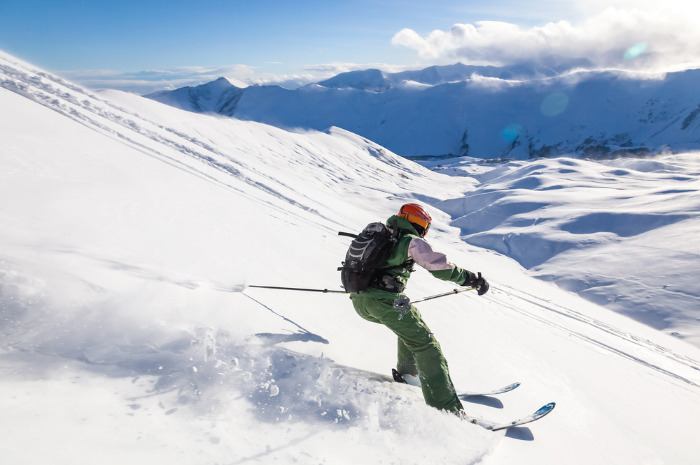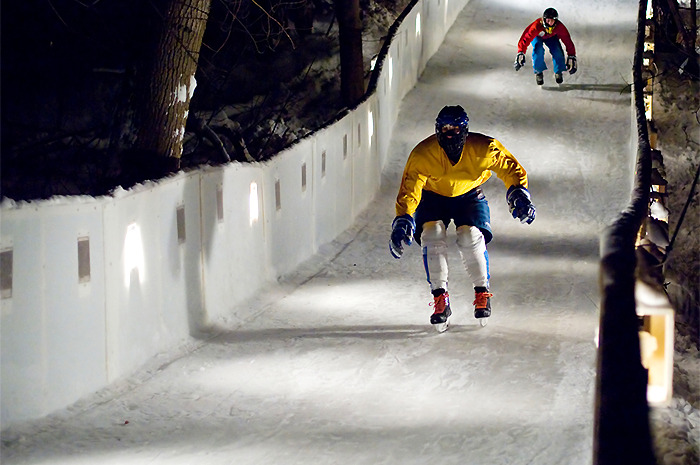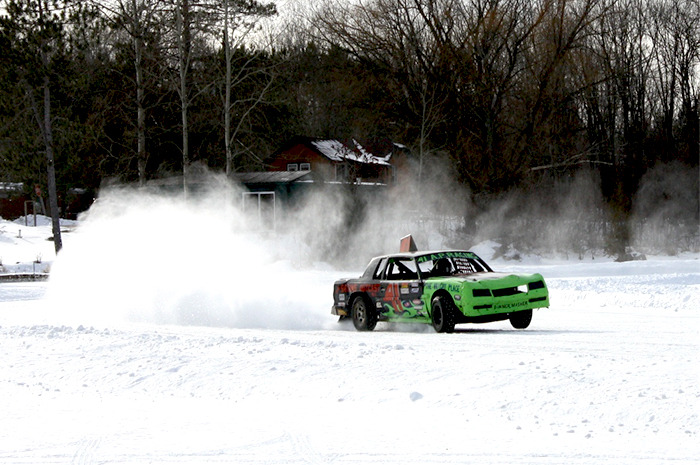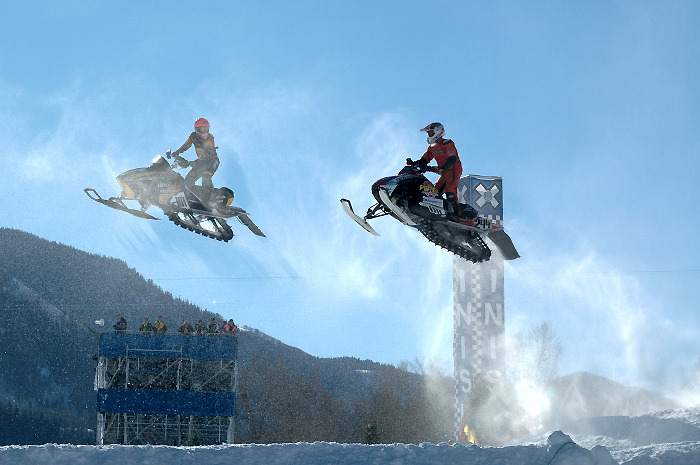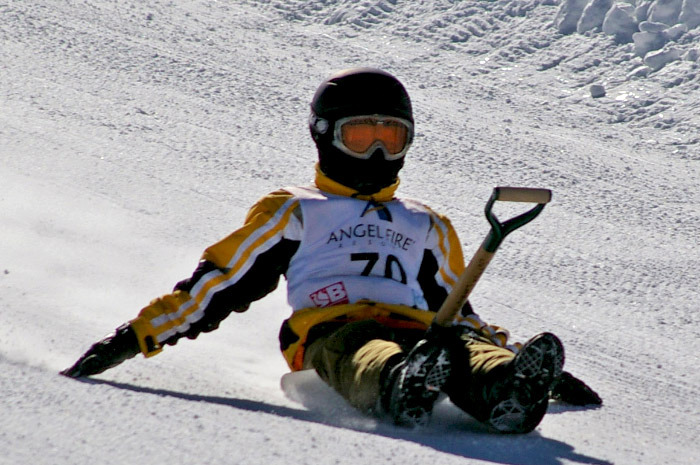Sports That Are Too Extreme For The Winter Olympics
Sports That Are Too Extreme for the Winter Olympics
There's no denying that all official Winter Olympic sports require an elite level of athleticism that cannot be compared, but these over-the-edge winter sports go beyond luging and jumping and take "playing outside in the snow" to the ultimate extremes.
Snowkayaking
If the term conjures images of leisurely boaters happily paddling along through light, fluffy snow, engage your imagination just a little bit more and picture fearless thrill-seekers setting sail over steep mountain cliffs and racing down 4-cross style tracks instead. A fairly new sport, the second official Snowkayaking World Cup took place in Austria in 2008. Red Bull has held a snow kayak race comprised of a custom-made downhill snow track in Estonia. Because waxed boats in contact with snow can reach some pretty substantial speeds, most ski resorts don't allow the sport.
Ski Cliff Jumping
If skiing downhill at unimaginable speeds is extreme, than skiing downhill and jumping over cliffs is just about as batty as it gets. Sure, ski jumping is an official winter sport, but ski cliff jumpers take this sport off the straight track and into the unknown. The world record for the highest cliff jump on skis is 255 feet, set at Grand Targhee, Wyoming, and is held by Jamie Pierre, who survived the perilous jump but died tragically in an avalanche in 2011.
Ski Ballet
The sport was a demonstration sport in the 1988 and 1992 Winter Olympics. It never became an Olympic sport which resulted in it significantly declining in popularity. The International Ski Federation stopped all ski ballet acidity and the sport is no longer a part of competitive freestyle skiing.
Skijoring
Skijoring is a crazy winter adventure. All you need is skis and a horse, dog or car and the proper towing apparatus. Skijoring is an actual sport with real competitions and, with a bit of training, it's a sport that the average person can do. If you'd like to watch the pros, equestrian skijoring races are popular out west—Whitefish, Montana hosts the World Skijoring Championships each year.
Reindeer Racing
Compared to other extreme winter sports, reindeer racing takes place on a much smaller level, but that doesn't mean it's not just as crazy and competitive. Popular in Russia, Finland and especially Norway, the theatrical event pairs man and animal for a festive and speedy race down a 201-meter-long snow covered track. In Norway the event is a part of Sami National Day; a celebration of the land's original inhabitants who rely heavily on reindeer for meat, fur, and transportation. The Reindeer Racing Championships will take place on Feb. 11.
Snowkiting
Snowkiting is the powder-based equivalent of kitesurfing, except with no water to cushion the blow of a bump or a fall it's a bit more dangerous, and arguably more extreme. First-timers are advised not to kite near obvious obstacles (like active streets and highways, crowded areas, or railroad tracks) and to pay attention to wind speeds. A twofold increase could be the difference between feeling sporty tension and being dragged (yarded) uncontrollably. With the potential to reach speeds of more than 50MPH, remaining in control of your kite certainly sounds like a good idea.
Bandy
You may think of ice hockey; the game is a forerunner of hockey. The sport is indeed played on ice, but the skaters use sticks to direct a ball into the opposing team's goal. Bandy is recognized by the International Olympic Committee, and was played as a demonstration sport at the 1952 Winter Olympics in Oslo. The 2018 Bandy World Championship was the 38th Bandy World Championship between men's bandy teams, and it took place in Russia and China.
Speed Skiing
Any sport whose main objective involves going as fast as humanly possible definitely deserves the distinction of being dubbed extreme. Speed skiers travel downhill in a straight line, usually reaching speeds of more than 125 miles per hour. This is the fastest non-motorized sport ever. Speed skiing had been featured as demonstration sport at the 1992 Winter Olympics, but after the accidental death (not during competition) of Swiss speed skier Nicholas Bochatay that year the sport has yet to make a return to the Olympic program.
Ice Cross
First introduced in 2000 in Stockholm, this intense ice sport is a race between four hockey-equipped skaters. But with Red Bull involved, obviously it's no ordinary rink race. Instead, skaters sprint down a bobsled run as they fight to remain upright while clearing obstacles like jumps and ledges. Since the sport's debut Red Bull has hosted five of their signature "Crashed Ice" world championship events.
Automobile Ice Racing
This slippery sport is exactly as its name implies; on an ice-covered track, and usually in lightweight, front-wheel-drive cars, drivers put the limits of speed and control to the ultimate test. Mostly a recreational sport, there are no official organizations that represent its interests and events are usually hosted by local clubs like the Michigan Ice Racing Association.
Snocross
With riders reaching speeds of up to 60 miles per hour and heights as high as 130 feet, Snocross (a winter weather version of motor cross performed with snowmobiles) is not only one of the most extreme non-Olympic winter sports, but also one of the most organized. Governed by the World Snowmobile Association, Snocross was first featured in the 1998 winter X Games (it was removed in 2011). Both its participation and following has grown significantly since then and the ISOC hosts a handful of yearly regional and national events.
Shovel Racing
What started as an innocent after-work pastime for employees at Angel Fire Resort in New Mexico quickly expanded into a widely-loved, high-speed sport that went on to be a part of the first winter X Games in 1997. One wicked crash was all it took to take it off the roster, though. Angel Fire also ended its yearly shovel racing competitions in 2005 when liability concerns were raised, but the sport, which John Strader (an avid, long-time shovel racer) calls the "poor man's luge," made a triumphant comeback in 2010 when Angel Fire re-introduced their world championship competition. The last Shovel Racing World Championships just took place at the Angel Fire Resort.
